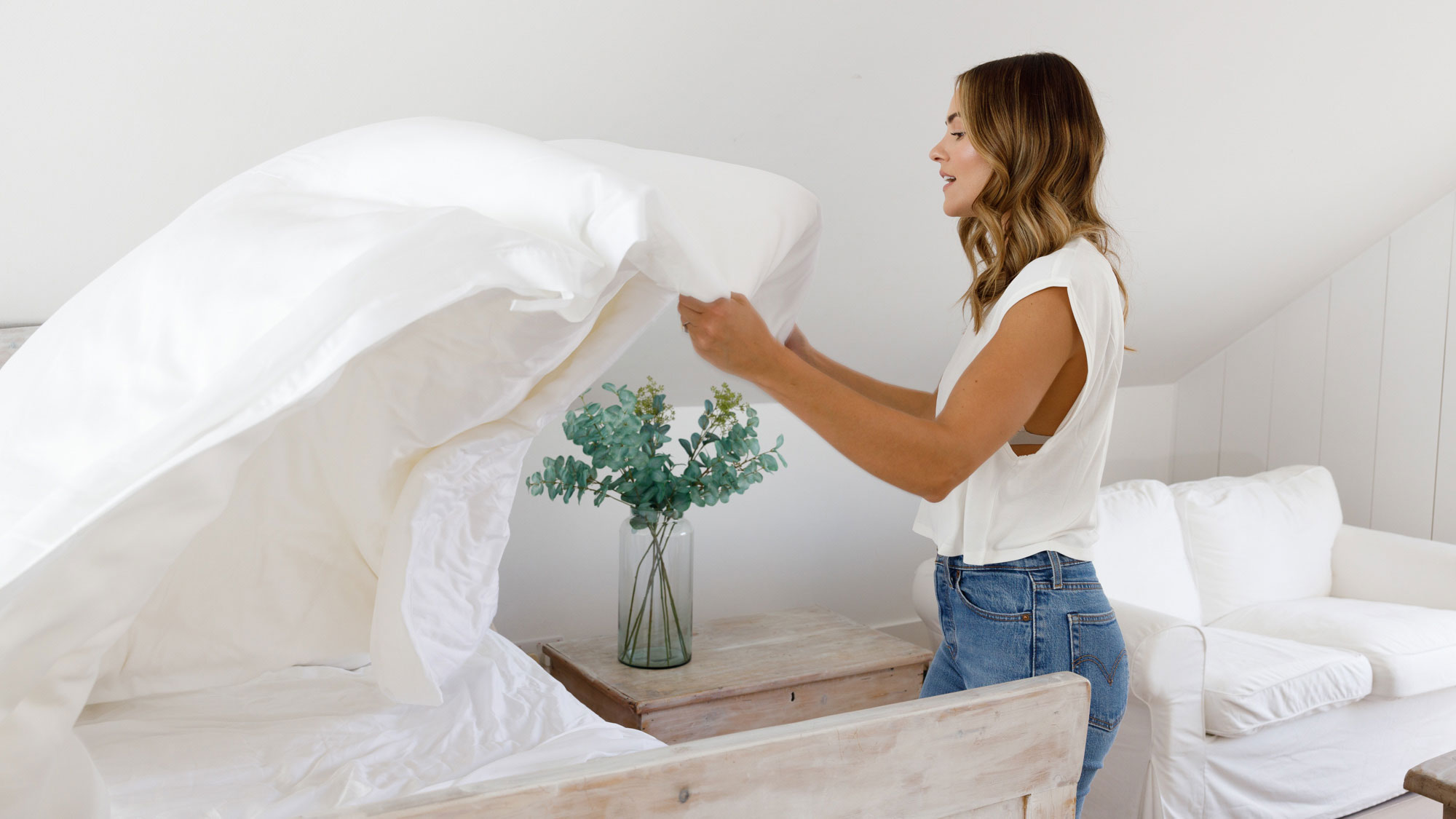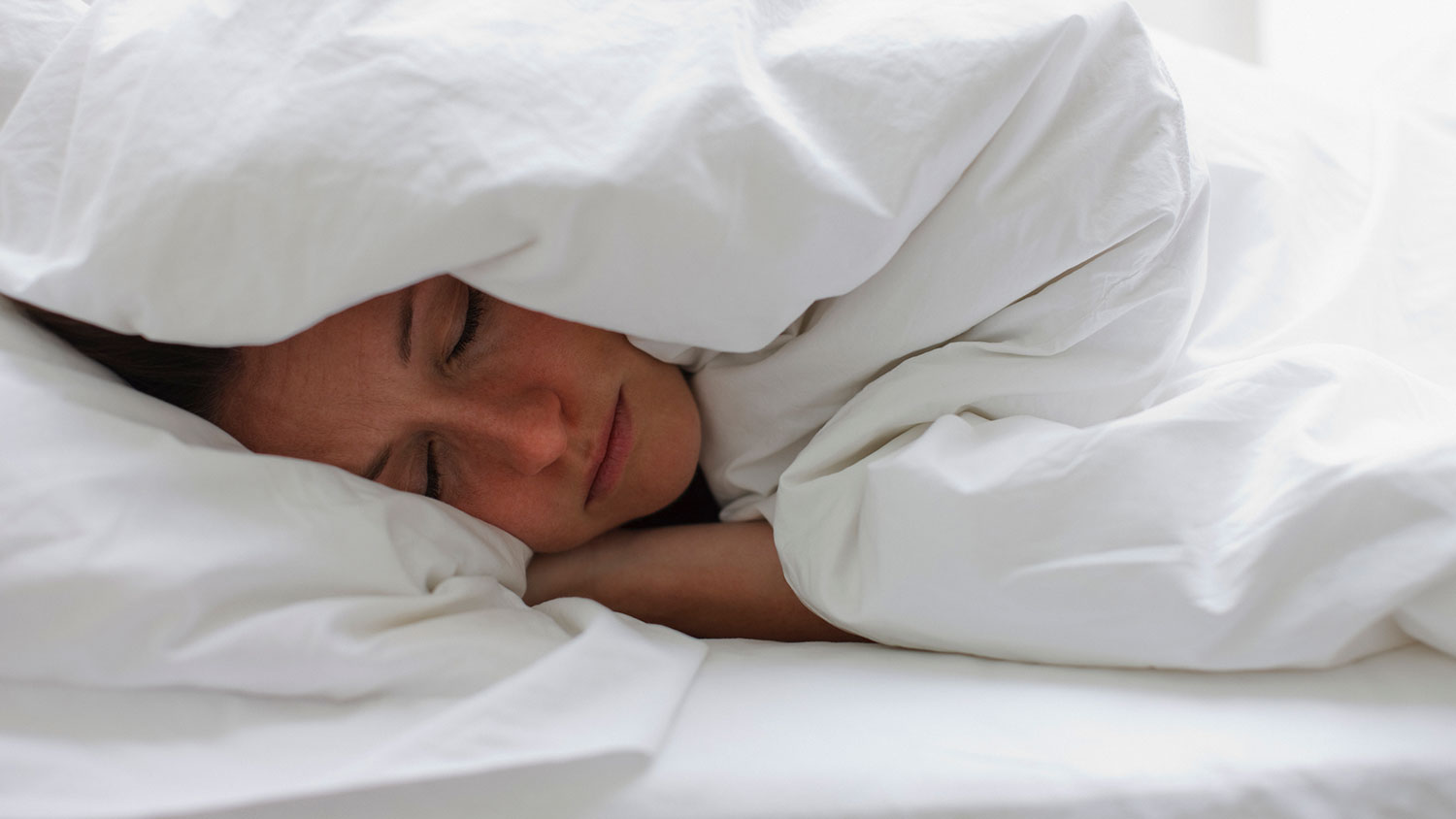How often should you swap your bedsheets during flu season?
It's more often than you might expect

The winter months mean that it's flu season, with all manner of germs and viruses doing the rounds. In the case of seasonal flu the most likely way you're going to catch it, according to the CDC, is through droplets in the air when other people with flu cough, sneeze, or even talk in your vicinity.
However if you or your partner come down with the flu, another way it can spread is via your bedding; we can spread germs and viruses when we sleep without realising, which is an ideal way to pass infections on to anyone sleeping in the same bed. So it makes sense to keep bedding as clean as possible when there's flu about, but how far should you go?
The answer, according to Ethical Bedding CEO James Higgins, might surprise you: he suggests that if you're suffering from a cold or flu, you should try to change your bedding every 72 hours. But before you panic at the thought of all that extra laundry, there is a proviso: "You don’t have to wash the bedding," he adds, "but you should swap it out for fresh sheets to get rid of the bacteria that could be lingering within your bedding."
How long do flu germs live on bedding?
The flu virus can survive outside of the human body for 24 hours or longer, depending on various factors including the type of surface it lands on, humidity and temperature. Non-porous surfaces such as door handles, keyboards and phones are places for the flu virus to survive and spread itself about, while porous surfaces - including bedding - are a lot less welcoming to viruses.
"Porous fabrics are able to absorb moisture and actually suck moisture away from the virus, leaving it dry," explains Higgins. "The lack of moisture is what causes the virus structure to degrade." It's something to consider when you're shopping for the best mattress and best pillows, too, as many options have covers designed to wick moisture away, creating an inhospitable surface for germs and viruses.
Higgins says that germs can live on bedding for a few hours; however different types of bedding can mean longer or shorter survival times. "The ideal bedding to prevent the spread of germs is one that creates an environment that is difficult for viruses and germs to exist in. " he says.
What are the most hygienic bedding options?

Artificial fabrics such as nylon and polyester can give germs and viruses a much better chance of survival because they're not very absorbent. "They often create a sweaty environment throughout the night that is uncomfortable for humans but ideal for germs," notes Higgins.
Sign up for breaking news, reviews, opinion, top tech deals, and more.
"Having breathable bedding that wicks moisture away from the body creates a more hygienic sleeping environment," he adds. "Any viruses that are introduced to the bedding will soon break down from dehydration.”
Standard cotton is a better bet, he says, but not by much because its short fibres are less absorbent than longer fibre cottons, making it less able to wick away moisture. For best results, Higgins suggests organic cotton, which is well known for its breathability and moisture-wicking properties, as well as, surprisingly, the semi-synthetic Tencel: "The absorbency of the fabric gives it anti-bacterial properties and creates a harsh environment for any invading germs," says Higgins.
How to prevent germs spreading on bedding
So, while germs may not actually survive that long in your bed, depending on the fabrics your sheets, pillows and other bedding are made of, you don't want to give them any opportunities. As well as swapping all your bedclothes every 72 hours, Higgins recommends washing bedding frequently with hot water.
"If the fabric permits," he continues, "add in some colour safe bleach or hydrogen peroxide to sanitise sheets effectively (be careful though, as this could damage your sheets depending on what they are made from). They should also be given time to dry properly either in a dryer or in the sun."
If there's actual flu in your household, he also suggests changing and washing pillowcases - which are most likely to harbour the virus - every day, Other sensible precautions include keeping windows and curtains open when possible to air out stale air while benefiting from the disinfecting properties of sunlight.
And if you've succumbed, our guide to 6 tips to help you sleep better when you've got a cold can help you get the rest you need while your immune system does its thing.

A professional writer with over a quarter of a century's experience, Jim has been covering mattress and sleep-related subjects for TechRadar, Tom's Guide and T3 over the past few years, gathering an in-depth knowledge of the workings of the mattress industry along the way. Previously Jim has covered a wide variety of subjects, working widely in the tech and gaming sectors, and more recently covering the design and wellness industries.